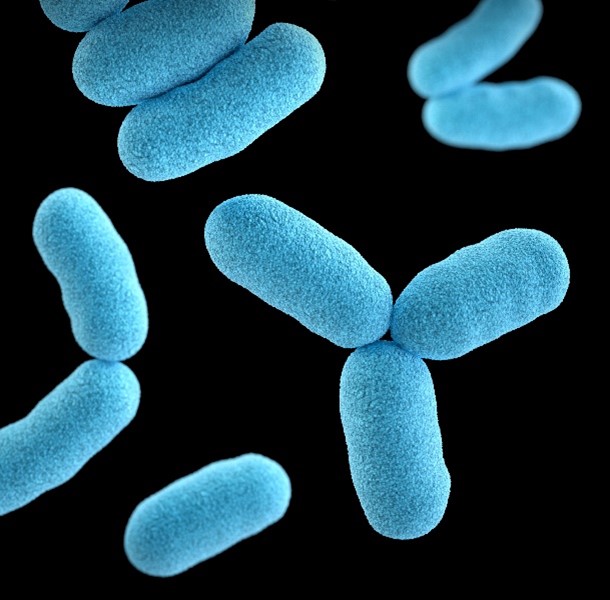Microbiomes and sustainable nutrition

In this section for submissions by our Fellows, Dr Nick Smith, Professor Warren McNabb, and Distinguished Professor Harjinder Singh FRSNZ explain the important relationship between the microscopic world and human nutritional health.
Did you know that around 10% of your daily energy intake is supplied by your intestinal microbes? Or that many plants and animals that we rely on for food are dependent on microbes for their survival? Although the connections between the microscopic world and the global scale of sustainable nutrition are not obvious, microbes play a significant role in the way our food is produced, processed and digested.
The term microbiome refers to a collection of microbes in a certain environment. For example, the human gut microbiome consists of the microbial population living in our intestinal tract, which is receiving increasing attention as we recognise its importance in human health.
Microbiomes exist in diverse locations, many of which form part of the global food system. The role of these microbiomes in delivering sustainable nutrition for the global population is increasingly clear.
Our crops rely on soil nutrients, such as nitrogen, to grow and produce the plant material that we or domesticated animals then consume. Often these nutrients are applied to cropland as fertiliser, produced either industrially or from animal sources. Management of fertiliser application is essential to avoid environmental damage caused by excess nutrients in soils and waterways.
Nitrogen can also be captured directly from the air by soil and root microbiomes, and microbes associated with roots can increase the availability of micronutrients to the plant. These microbes also increase the resistance of crops to soil pathogens. Moreover, soil microbes play a role in reducing soil erosion by producing products that bind the soil together. Current soil microbiome research is tackling the problem of reduced crop yields due to microbiome depletion and working to understand how the beneficial impacts of soil microbes can be harnessed.
In addition to plant-sourced food products, microbiomes are essential in the production of animal-sourced foods. An example of this is the rumen microbiome. Much of the forage consumed by ruminants cannot be digested by the animal’s own digestive enzymes; instead, the action of rumen microbes converts resistant plant matter, such as cellulose, to nutrients that can be absorbed by the animal’s digestive tract. These microbial products form the majority of energy intake for many domesticated ruminants. The actions of the rumen microbiome are thus an important step in converting inedible plant material into animal-sourced food products for our own diet.
Rumen microbiome research currently has a strong focus on minimising the production of methane, a greenhouse gas and by-product of digesting plant material, by the rumen microbiome. This research is unpacking what causes certain microbiomes to produce less methane than others, and what the impact of different animal feeds is on methane production.
Continuing along the food supply chain, microbes are responsible for the production of common fermented foods. Fermented foods include cheeses, yoghurts, kimchi, sourdough and fermented meats, and are produced via the introduction of microbial populations to the raw food material. Apart from changing the taste, texture and appearance of these foods, the fermentation process enables perishable foods to be stored for longer periods, which can reduce food waste. The nutritional value of fermented foods is also enhanced in many cases. For example, the fermentation of cabbage to sauerkraut results in vitamin B12 synthesis, a nutrient not available from unfermented cabbage. There is also the probiotic capacity of fermented foods: their consumption can introduce beneficial bacteria to the human gut microbiome. Learn more.
Microbiomes continue to play a role in the food system even after food is eaten. Although there are microbiomes in different sections of the human digestive system, the intestinal microbiome is intensively studied for its impacts on human nutrition and health. The make-up of our microbiome is in part determined by our diet, which forms the major food source for intestinal microbes. Just as our own ten trillion human cells require the nutrients we eat to carry out their function, so too do our equally numerous microbial cells.
Current research is demonstrating increasing links between gut microbiome composition and various outcomes for human nutrition and health. This includes links to energy and nutrient yield from the diet, roles in intestinal disease and even impacts on brain function and mood. It is now recognised that we cannot have a full appreciation of human nutritional health without consideration of the gut microbiome.
A sustainable food system is one that ensures food security and nutrition for all, without compromising the future of the economic, social and environmental bases on which the system depends. Microbiomes are a critical element of a sustainable food system. Soil microbiomes enable and enhance crop growth, while playing a protective role in minimising the environmental damage of farming. Animal microbiomes are essential for the conversion of inedible plant material to animal-sourced foods, essential for food security in many parts of the world. Fermented foods are an integral constituent of the diet in many cultures and provide a means of preserving perishable foods, as well as adding nutritional and financial value. Finally, the human microbiome in part determines the nutrition we obtain from the foods we eat.
Microbiomes are present throughout the food system, and touch on all aspects of sustainability. As such, designing sustainable food systems for the future must involve consideration of the microbial world.
